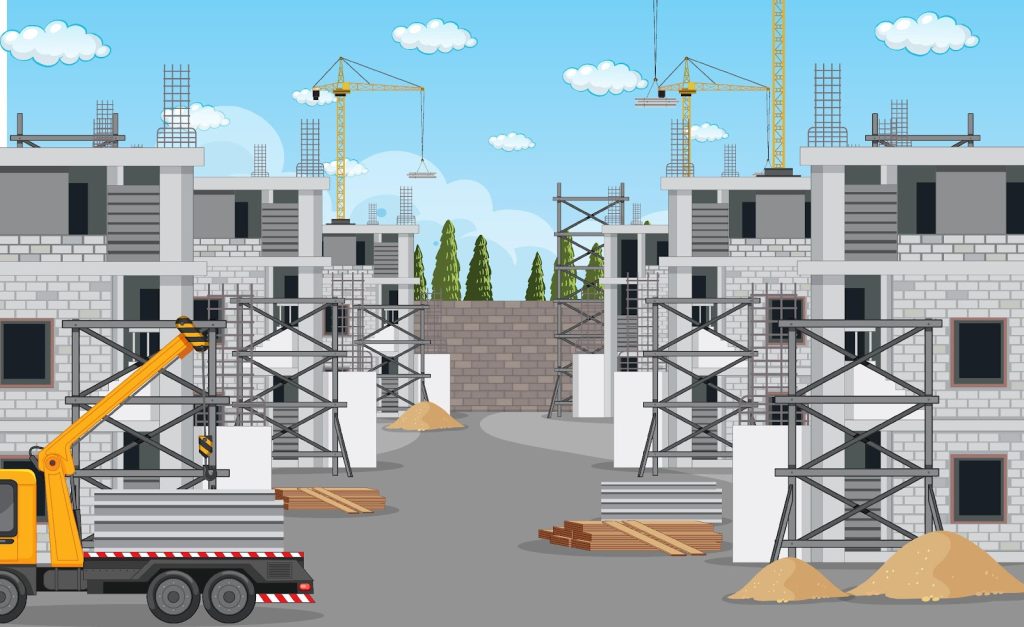What Are the Most Common Types of Foundation Used in Building Construction?

There are several types of foundations used in building construction, including:
Strip foundation:
This type of foundation consists of a continuous strip of concrete that is laid on the ground to support the weight of the building.
Raft foundation:
This type of foundation is used when the soil is weak and cannot support the weight of the building. A concrete slab is laid over the entire area of the building, distributing the weight evenly across the soil.
Pile foundation:
This type of foundation is used when the soil is too weak or too deep to support a strip or raft foundation. Piles are long, slender columns made of concrete or steel that are driven deep into the ground to support the weight of the building.
Pier foundation:
This type of foundation consists of a series of concrete piers that support the weight of the building. Piers are usually spaced out evenly along the perimeter of the building and can be used in combination with a strip or raft foundation.
Trench foundation:
This type of foundation is similar to a strip foundation, but the trench is deeper and wider to accommodate heavier loads. The foundation is usually reinforced with steel to add strength and stability.
The type of foundation used will depend on a number of factors, including the size and weight of the building, the soil conditions, and local building codes and regulations.
What are the Advantages and Disadvantages of Different Types of Foundations?
Each type of foundation has its own advantages and disadvantages. Strip foundations, for example, are relatively simple and cost-effective to construct, but they may not be suitable for buildings with heavy loads or poor soil conditions. Raft foundations, on the other hand, are suitable for a wide range of soil conditions and can distribute weight evenly, but they are typically more expensive than strip foundations.
Pile foundations are ideal for buildings on soft or unstable soil and can be used to support very heavy loads. However, they can be expensive to install, and the process can be noisy and disruptive. Pier foundations are often used in combination with other types of foundations and are typically less expensive than pile foundations. However, they may not be suitable for buildings with heavy loads or poor soil conditions.
Trench foundations are similar to strip foundations but are deeper and wider. They can support heavy loads and are suitable for a wide range of soil conditions, but they can be more expensive than strip foundations and may require more excavation work.
In summary, each type of foundation has its own advantages and disadvantages, and the selection of the appropriate foundation depends on various factors, including soil conditions, building weight and size, and cost considerations. A professional engineer or construction expert can help determine the best foundation type for a particular construction project.
Conclusion
There are several types of foundations commonly used in building construction, including strip foundation, raft foundation, pile foundation, pier foundation, and trench foundation. The selection of the type of foundation depends on various factors such as the size and weight of the building, soil conditions, and local building codes and regulations. It is important to choose the appropriate type of foundation to ensure that the building is properly supported and remains structurally sound for the long term.

Glenda Eaton is a versatile writer known for her expertise in various topics, including construction. With a knack for research and a flair for writing, she delves into diverse subjects to captivate readers.







